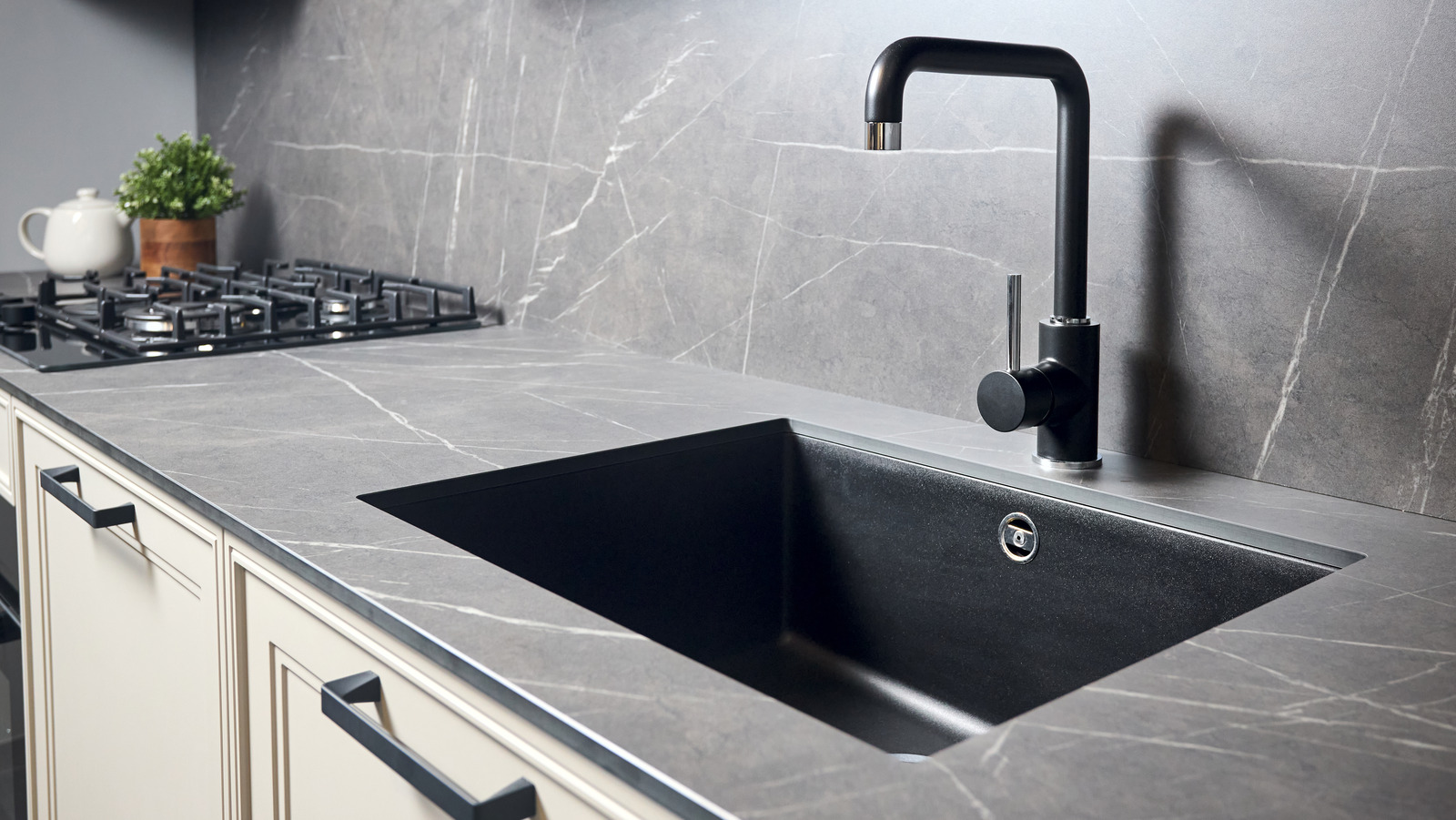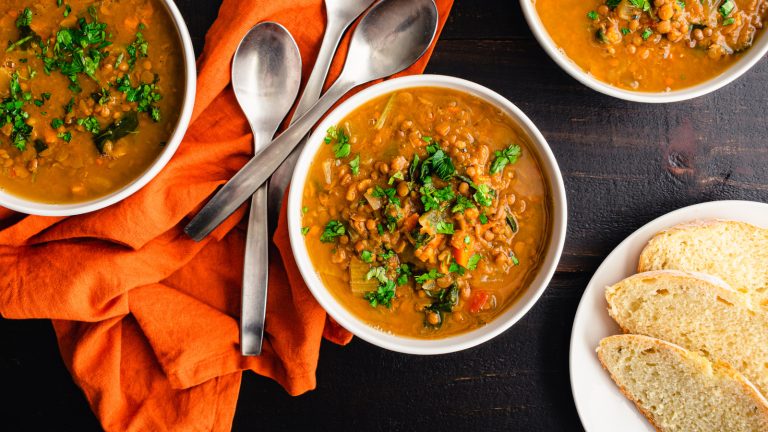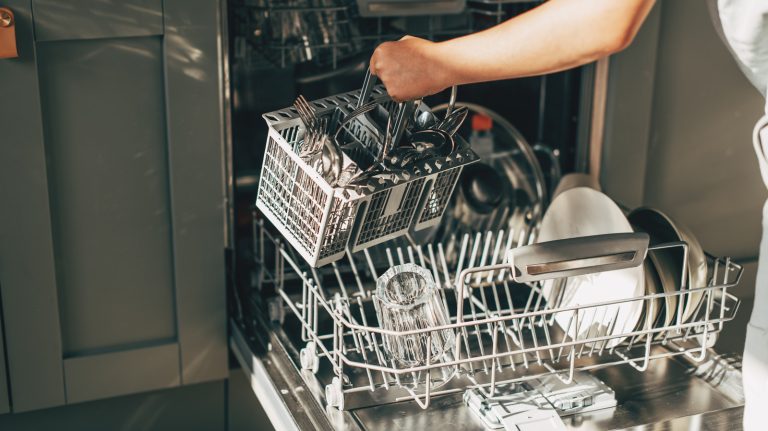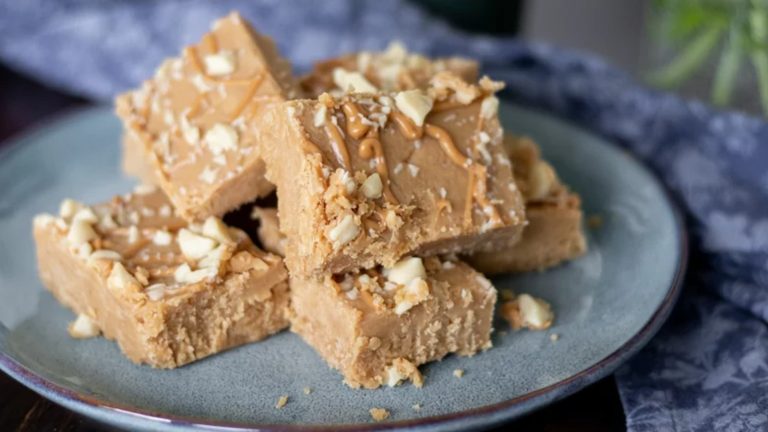There are several highly rated kitchen faucets on the market, but that doesn’t mean that it is easy to decide which is the best choice for your kitchen. In fact, with so many different styles, brands, finishes, and features to choose from, the task of choosing one can become even more challenging and overwhelming. If you’ve been wondering whether a high-arc or low-arc model is best, whether you should look for something with one or two handles, or if there are really any benefits to splurging for a motion-activated or voice-controlled faucet, then you’re in the right place.
We reached out to three plumbing, design, and kitchen renovation experts to find out these and other questions. Keith Bynum is a star of HGTV’s “Bargain Block,” a designer, and a renovation expert; Kelly Russum is the owner of KC’s 23 ½ Hour Plumbing and Air Conditioning in Palm Springs, California; and Natalie Beech is the marketing manager and media lead at Greg’s Plumbing & Heating Inc. in Hamilton, Ontario. Ahead, you’ll hear the expert advice they shared with Tasting Table during their exclusive interviews. By the end of this piece, you should be armed with the information you need to choose the perfect faucet for your kitchen.
Decide whether you want a single- or a double-handle faucet
One of the first things you’ll need to determine is whether you’d prefer a single- or double-handled faucet. Natalie Beech shares, “Single‑handle faucets let you adjust temperature and flow with one hand — perfect if you’re often holding a pot or have messy hands.” These faucets may also be a better choice if your goal is to create a modern space. They have a much more streamlined look and take up less space than their double-handled counterparts. “Plus, if your hands are often messy (think cooking with dough or raw meat), a single-handle faucet lets you nudge it with a wrist or elbow,” adds Kelly Russum.
There are some reasons you might decide that a double-handled faucet is best for you. According to Russum, with the two handles, you’ll be able to more precisely adjust the temperature. Moreover, he explains, “If you live with kids or aging parents, a double-handle may reduce scalding risks thanks to separate temperature controls.” Design-wise, a double-handled faucet could be a good pick if you’re trying to design the retro kitchen of your dreams, according to Keith Bynum. However, Bynum also notes that with the additional holes that will be needed to accommodate both handles, these faucets will take up more space on your countertop and around your sink.
Determine whether a high- or low-arc model matches your style and sink depth
To choose between a high- or low-arc faucet, you’ll not only want to consider your personal preferences, but you’ll also want to take the depth of your sink into account. As Kelly Russum explains, “A deep sink with a low faucet forces awkward wrist angles when rinsing.” While a shallow sink with a high-arc faucet is likely to lead to too much splashing and splattering.
Still, there are some general benefits of each faucet type to keep in mind — especially if you are also thinking about choosing a new sink for your kitchen and will have some more flexibility. “A high arc sink is not only beautiful but it gives you more room to work in the sink. As long as your sink has the depth and width to accommodate a high arc faucet, this is my preference,” says Keith Bynum. Russum also recommends high-arc sinks for those who batch cook and need to fill or clean tall pots.
However, tall arc sinks won’t be the best fit for every kitchen. Russum points out that their height might not be the right fit if your sink is in front of a window or if you have upper cabinets near the sink area. He also notes, “Low-arc faucets stay out of the way in tight spaces and suit minimalist designs. Plus, they create fewer blind spots, so they’re great if you often wash fragile items by hand.”
Consider whether an integrated or separate sprayer is right for you
If you’ve started looking around for a new faucet already, then you probably already know that many models feature an integrated sprayer (with a head that pulls out from the faucet), while others have a fixed head with a separate sprayer to the side. Our experts generally recommend opting for an integrated sprayer if you’re looking for a more compact and sleek design. As Keith Bynum, “I think it’s great to have the faucet and sprayer all in one. It keeps everything streamlined and saves space in your sink area, plus it’s easy to use!
However, that doesn’t mean that side sprayers won’t ever be the right choice. According to Kelly Russum, “Side sprayers add flexibility (especially in larger sinks), but often require an extra hole. They are better if you like having a ‘helper tool,’ for example, when cleaning sink edges or filling pots on the counter.” Ultimately, the size and layout of your sink area and your preferences for cleaning or prepping meals should guide your decision.
If choosing an integrated sprayer, decide whether you want a pull-down or pull-out style
Many homeowners opt for an integrated sprayer due to the benefits shared by our experts above. However, even after you’ve made this decision, there is still one more thing to consider. There are actually two different types of faucets that have integrated sprayers — pull-downs or pull-out models. Kelly Russum says, “Think about the sprayer type; pull-downs work best for deep sinks, while pull-outs give you better control in shallower setups.”
Generally speaking, a pull-down sprayer will be found on a high-arc faucet. The end of the arc with the head of the faucet will simply pull down, as the name suggests. If you need to be able to reach into the corners of a deeper sink, this may be a better fit for you, as Russum suggested. Pull-out sprayers, on the other hand, are typically part of a low-arc faucet. Instead of pulling these spray heads down towards the sink, you pull them forward. Then, you’ll be able to maneuver them around within the sink to clean or access water for other needs. Regardless of which integrated sprayer setup you opt for, don’t forget to pay attention to the length of the hose. This will determine how long of a reach you’ll have and how easy — or difficult — it will be to use the sprayer as desired.
Don’t forget to consider the best finish to achieve your kitchen design goals
To avoid making a kitchen design mistake, you shouldn’t overlook the finish of the faucet. While it may not seem like it, a faucet can actually play a huge role in the overall aesthetics of the space. “When choosing the right finish for your kitchen, it’s important to think about the tone of the space that you’re going for. If you want to incorporate a warmer look, brass or brushed nickel is a great choice. They feel super welcoming and sophisticated — I love this for more traditional kitchen styles,” says Keith Bynum. For more modern spaces, he recommends matte black or polished chrome to create a cooler tone.
With his plumbing background, Kelly Russum offers a slightly different perspective. While he doesn’t recommend completely abandoning your style goals, he does note that some finishes are better suited for heavy use and long-term durability than others. “Skip trendy finishes if you’re a heavy-duty cook; brushed nickel and stainless steel hide fingerprints and water spots better than matte black or polished brass,” says Russum. Additionally, he recommends looking for a faucet that has a corrosion-resistant coating to help further extend its useful life and prevent rust from building up in the future.
Consider whether paying for premium features will be worth the benefits
If you’re someone who is always seeking out the latest smart kitchen appliances for an enhanced cooking experience or looking for new ways to put your Amazon Alexa to good use in the kitchen, then you might be tempted by some of the kitchen faucets that offer premium features. However, before you pay the premium prices that go along with these premium features, you’ll want to decide whether splurging on such models is the best choice for you. Keith Bynum shares, “The no-touch faucets are ideal for the home chef. [Bynum’s partner] Evan loves to cook, and I love to bake, so when we’re in the middle of a recipe, the no-touch faucets keep us moving to the next step.”
If you want to go one step further, you might consider a voice-activated model. According to Kelly Russum, these models “are useful if you cook with Alexa and want a hands-free water measurement.” Russum also notes that seeking out a model with LED temperature indicators could add another layer of convenience to your time in the kitchen. However, Russum also keeps things real and encourages you to assess how much time you spend at the sink and the types of tasks you want to be able to do. “If you’re mostly washing leftovers from a few plates once in a while, these features become expensive fluff,” he says.
Don’t overlook the number of holes in your kitchen sink as you shop
Before shopping for a new faucet, it is important to verify how many holes your current sink has. As Kelly Russum explains, “Your sink’s pre-drilled holes dictate which faucets will fit. Ordering the wrong configuration is the fastest way to double your costs.” Some faucets are designed to fit one hole. Others, especially those with two handles, may require three holes.
If you have more holes than you need, installation will often still be possible. The faucet you choose should tell you which hole configurations it is compatible with. However, even when a faucet is compatible with more sink holes than it actually requires, the results might not be as clean or streamlined as you desire. You’ll need to purchase or use the included escutcheon plate to cover the holes you do not need, which can lead to a clunkier look. Russum offers one other suggestion that can help you avoid this clunkier look. He says, “If you have extra holes, you can use them for soap dispensers or filtered water taps.”
If your sink doesn’t have enough holes for a faucet you’re considering, the best choice would be to look for a different model instead. In order to install one of these, you would need to add more holes, which would likely require the help of a plumber. If you have an undermount sink with stone countertops above it, it would be even more challenging and costly.
Depending on the water quality where you live, a built-in water filter might be a worthy add-on
You may have noticed that some faucets offer water filtering capabilities. According to our experts, there are definitely some benefits to choosing one of these (especially in some circumstances), but there are also some downsides that you will want to consider before having one installed. Keith Bynum recommends considering where you live and the water quality reports for your region to determine whether you really need such a faucet. “There are definitely areas of the country where I would recommend it (well water sources, lower water quality, etc.) and the ease of having it on the main faucet is that all water that you cook and wash with will be filtered. If you’re considering filtration, I would definitely consider the built-in option. Installing a separate water filter over the faucet would be much clunkier and less aesthetically appealing than choosing a model where everything is built in.
However, keep in mind that these faucets will require more than just the initial investment. As Kelly Russum explains, you’ll need to keep up with changing the cartridge as needed for proper water filtration. Russum also notes one other potential downside, sharing that the water “flow rate may drop slightly.”
If you’re going for a DIY installation, keep that in mind as you shop
In many cases, it will be possible to install a new kitchen faucet yourself. However, this doesn’t apply to all faucets or scenarios. So, if you’re attempting a DIY kitchen remodel, you’ll want to know what to look for in order to ensure a smooth and stress-free installation. “If you’re an experienced DIY’er, then I would recommend replacing your existing faucets. Single-hole faucets are definitely easier to replace, although widespread is fairly simple with existing holes,” says Keith Bynum.
However, depending on the faucet you choose or if there are any more complex needs associated with the project, a DIY installation could prove to be a mistake. For example, Bynum says, “We never recommend attempting your own plumbing; this is work for the experts!” You don’t want to mess with water and redoing piping — it is only opening the door for costly plumbing repairs down the line and the potential water damage that can come from not doing something correctly. Natalie Beech also advises against installing certain types of faucets on your own. She agrees with Bynum that single-handle faucets are typically easy to install. However, she explains, “Dual‑handle and smart models can be tricky — sometimes better left to a pro, especially to avoid leaks.”
You might decide that splurging for a pot filler is worth it
Beyond the main kitchen faucet over the sink, some people opt to install a separate pot filler closer to their range. However, before you purchase one, take some time to decide whether installing a pot filler in your kitchen is worth it. Keith Bynum finds these a worthy addition for many kitchens. He says, “It’s not just about style, but also convenience. If you spend a lot of time in the kitchen hosting dinner parties or entertaining, having both makes your space more functional and effortlessly beautiful.”
However, plumbing expert Kelly Russum offers some important considerations that you should keep in mind. While he acknowledges that pot fillers can be an asset if you regularly need to fill large pots with water, he also points out that installing one could prove to be more trouble than it’s worth. Beyond accumulating dust, Russum notes that adding one more water line to your kitchen means you’re increasing the chances that you’ll deal with a water leak at some point. “And since they’re wall-mounted, repairs often mean cutting into drywall,” he explains. Russum also recommends considering how involved (and expensive) the installation will be. “Installation can be tough, too, if the wall isn’t already prepped with a water line (retrofitting one can be expensive),” he shares.
Consider brand reputation when finalizing your decision
Beyond looking at the overall design of each faucet and determining whether it delivers the features and functionality that you desire, you should also consider the manufacturer. Some brands are more reputable than others, so you’ll be taking less of a gamble by purchasing a faucet from one of them. Well-known brands are more likely to use quality components, which can help minimize issues down the road. A reputable brand may also be more likely to offer support down the road if you experience any issues with common kitchen sink problems. This is why Natalie Beech says, “Choose faucets with reliable warranties — look for available parts and upkeep options.”
It is also a good idea to make sure that any of the faucets you’re considering are manufactured to meet U.S. safety standards. In mid-2025, several faucets from various Chinese manufacturers were recalled due to the potential for lead exposure. Going with a reputable brand that follows established safety standards will eliminate concerns around lead or other unsafe components.





